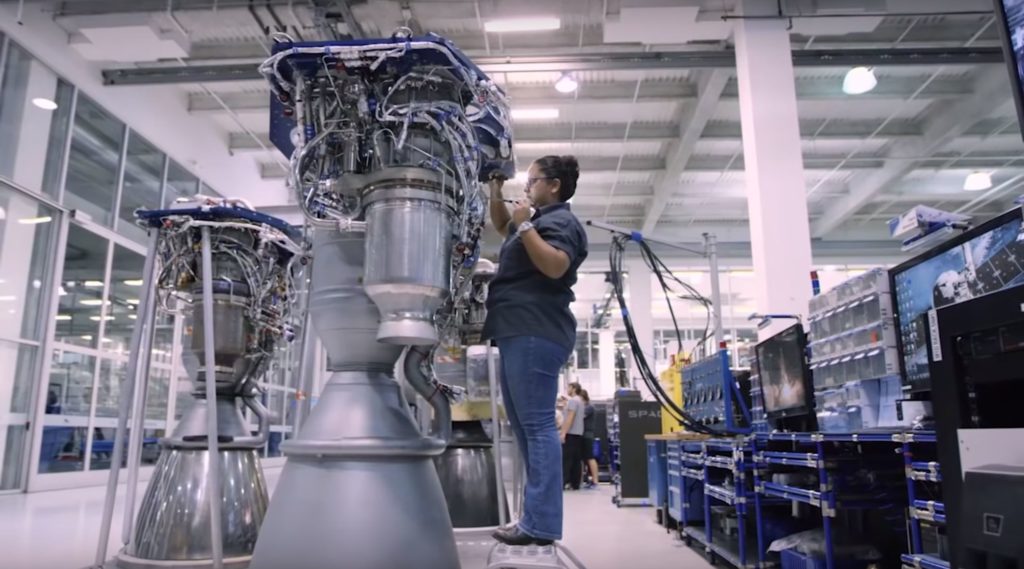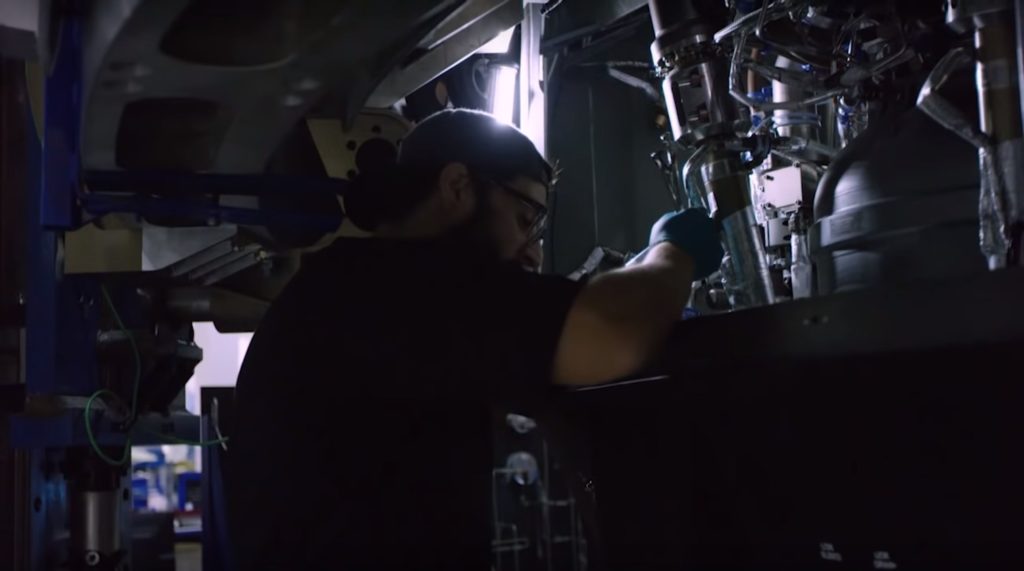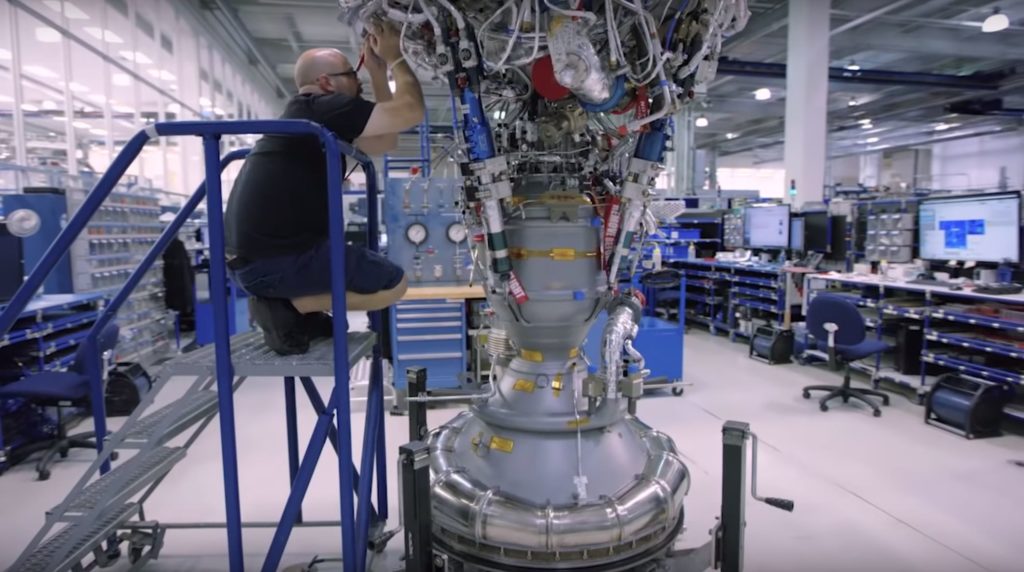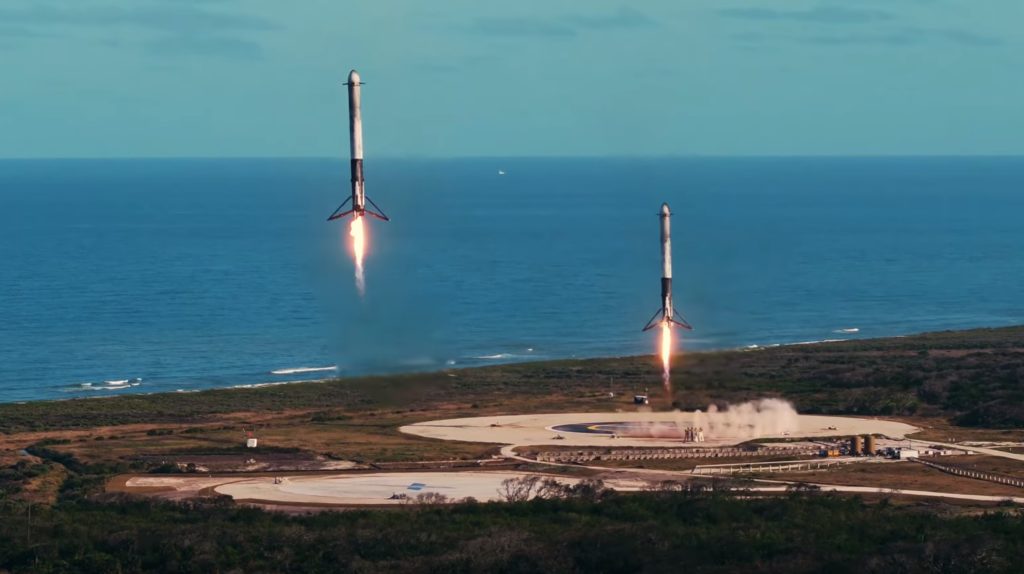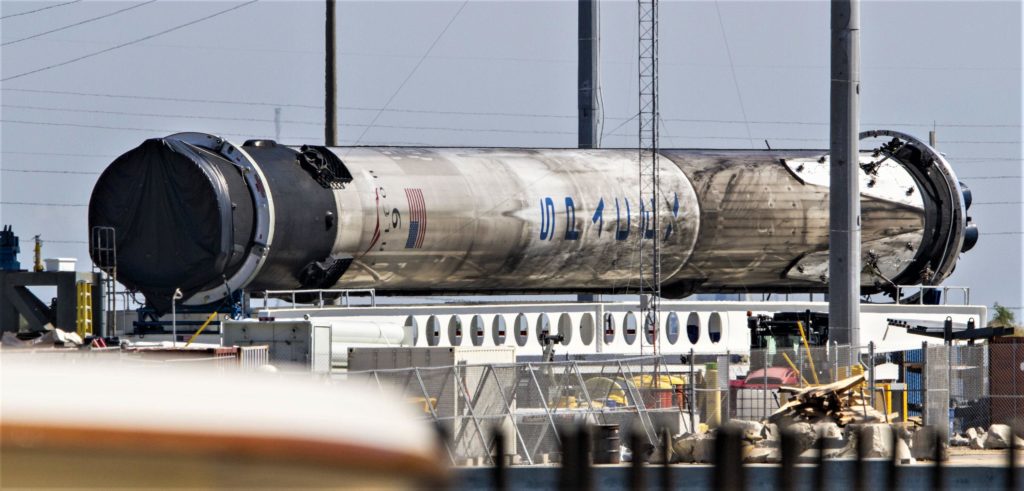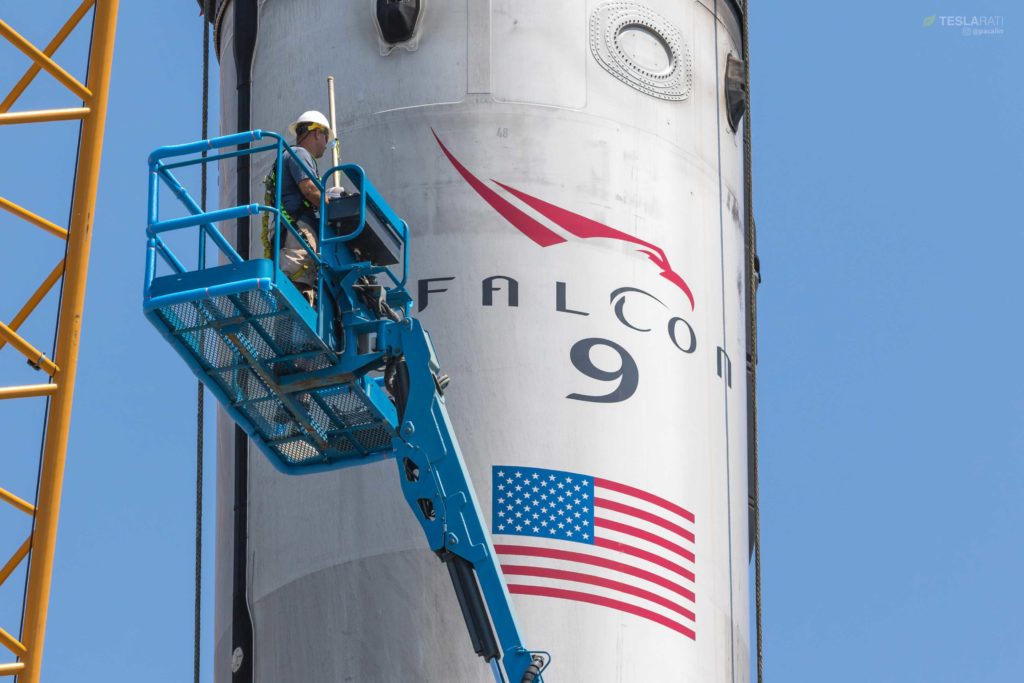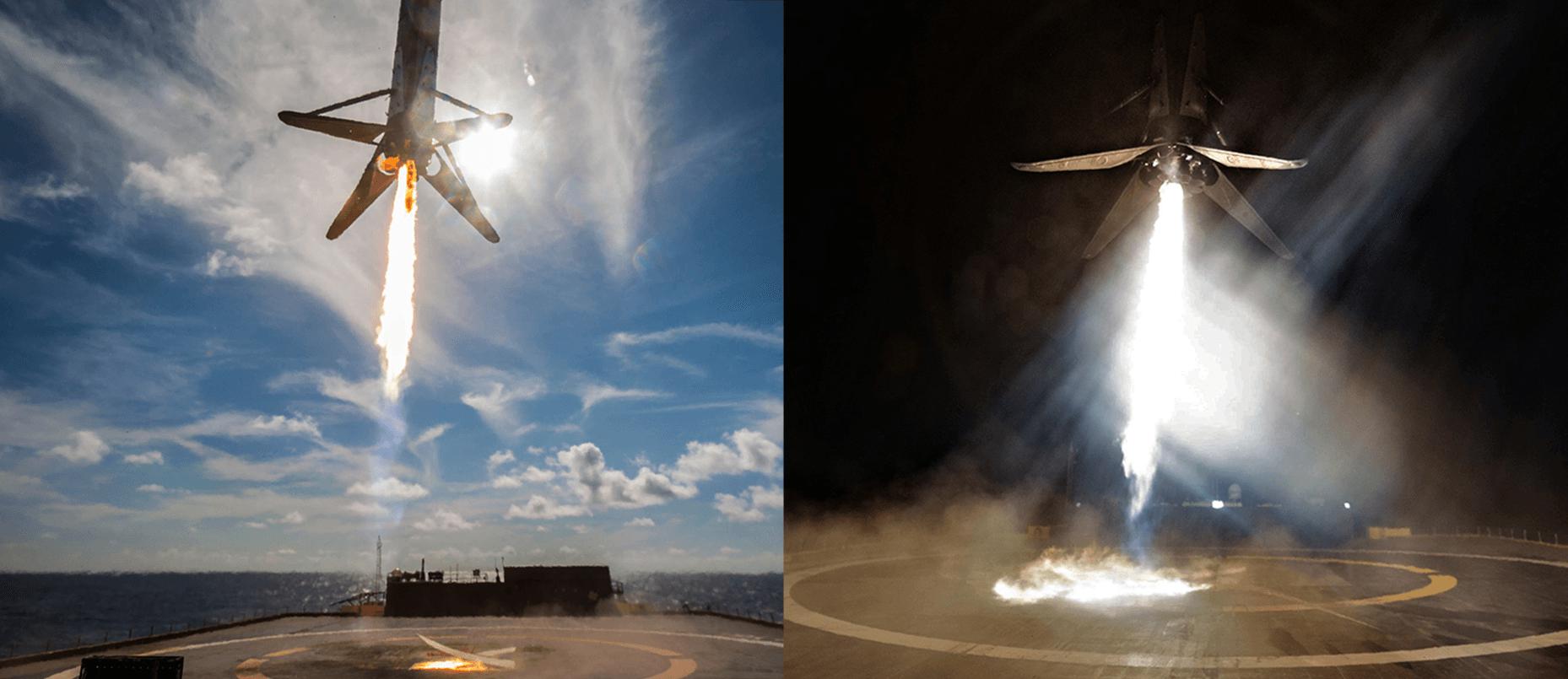
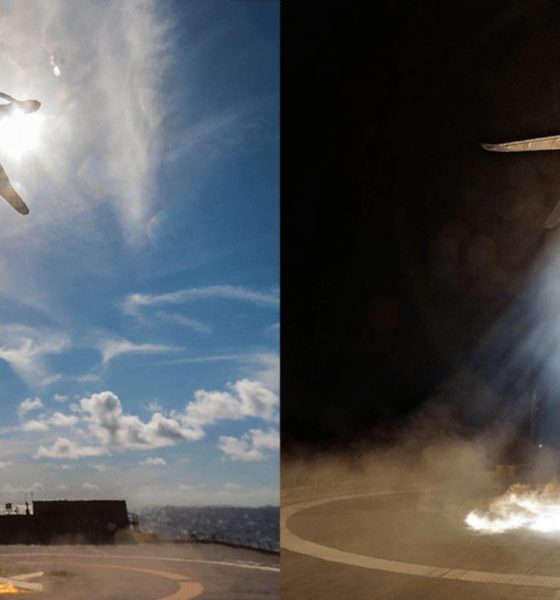
News
SpaceX’s Falcon 9 and Heavy manifest grows lopsided as launches align for Q4
For a variety of reasons both clear or otherwise, a significant number of SpaceX’s Falcon 9 and Falcon Heavy launches initially scheduled near the beginning or middle of the second half of 2018 are all slipping right into October, November, and December.
While communications satellite Telstar 18V’s two-week slip to NET September 8 and SAOCOM-1A’s own several-week tumble to October 7th appear to have their own respective and discernible reasons, namely some sort of range or payload issue (Telstar) and difficulties with the Falcon 9 rocket (SAOCOM), it’s much harder to know why multiple other payloads have slipped into late 2018.
Although the multiple slips and slides of several payloads and much of SpaceX’s H2 2018 launch manifest may be hard to parse alongside the year’s milestone first half, at least two reliable launch manifest sources (SpaceflightNow and one other) more or less independently corroborate the apparent realignment. Explanations, however, are far harder to find – to be expected in the business of space launch. Still, multiple launch delays can be traced to either payload or rocket issues.
- SpaceX technicians wrench on Merlin 1D and Merlin Vacuum engines. Raptor was apparently dramatically larger in person. (SpaceX)
- SpaceX technicians wrench on Merlin 1D and Merlin Vacuum engines. (SpaceX)
- SpaceX technicians wrench on Merlin 1D and Merlin Vacuum engines. (SpaceX)
Payload-side delays aplenty but rocket-slips, too
Iridium CEO Matt Desch, for example, noted that his company’s Iridium NEXT-8 launch of the constellation’s final 10 satellites is slipping from its original launch date target because of delays preparing the satellites for launch, rather than any issue with SpaceX rocket availability. While not official, the Falcon 9 launch of communications satellite Es’hail-2 has also rapidly jumped from the end of August or early September into Q4 2018 (likely NET October or November), hinting heavily at payload processing delays or technical issues with the complex satellite, as multi-month rocket-side delays would likely preclude interim September and October launches.
Still trying to nail the date down (satellite completion is gating, not rocket availability), but definitely won't be in September.
— Matt Desch (@IridiumBoss) August 13, 2018
Meanwhile, at least two of those prospective Q4 2018 SpaceX launches happen to be rideshare-dedicated, meaning that the payload consists of dozens of smaller satellites manifested and organized by a middleman company or agency. These two launches are Spaceflight’s SSO-A launch (~70 satellites) – currently NET November 2018 – and the US Air Force-led STP-2 mission, designed primarily to help SpaceX certify Falcon Heavy for Air Force launches while also placing roughly two dozen smaller satellites into orbit. STP-2 was delayed for multiple years as SpaceX gradually paced towards Falcon Heavy’s first real launch debut (February 2018), but launch delays (currently NET November 30 2018, probably 2019) will likely be caused by some combination of rocket, payload, and pad delays as SpaceX readies for what is essentially the second debut of much different Falcon Heavy.
While likely less a payload-side delay than a mountain-of-tedious-paperwork-and-bureaucracy delay, SpaceX’s NET November 2018 inaugural (uncrewed) demonstration launch of Crew Dragon, NASA scheduling documents published alongside an August 27 Advisory Council presentation suggest that the spacecraft will be ready for launch as early as September, whereas independent sources and visual observations have confirmed that the new Falcon 9 Block 5 booster (B1051) is either near the end or fully done with its McGregor, Texas acceptance testing. One certainly cannot blame SpaceX or NASA for caution at this stage, but the consequently uncertain launch debut of Crew Dragon almost certainly precludes any Falcon Heavy launches from Pad 39A in the interim, including STP-2’s theoretical NET November 30 launch date, which is literally inside Crew Dragon’s “November 2018” launch target.
- Falcon Heavy explodes off of Pad 39A, February 2018. (SpaceX)
- Falcon Heavy’s side boosters seconds away from near-simultaneous landings at Landing Zones 1 and 2. (SpaceX)
- SpaceX technicians wrench on Merlin 1D and Merlin Vacuum engines. Raptor was apparently dramatically larger in person. (SpaceX)
- It’s currently unclear whether B1046 or B1048 will become the first SpaceX rocket to fly three times. (Tom Cross)
- Falcon 9 B1048 stands proud after its West Coast launch debut, August 2nd. (Pauline Acalin)
On the other hand, several recent delays of SpaceX’s imminent (-ish) launch of Argentinian Earth observation satellite SAOCOM-1A have been suggested by several employees of the country’s CONAE space agency to be rocket-related, as they understand that the satellite itself is effectively ready to head to orbit at any time. It has yet to be officially confirmed, but it’s understood that Falcon 9 B1048 – previously flown on the launch of Iridium-7 – is being refurbished for SAOCOM-1A, potentially contributing to launch delays as SpaceX cautiously works through the inaugural reuses of some of its very first serial Falcon 9 Block 5 boosters.
Time will soon tell, as launching the roughly 8 to 10 launches tentatively remaining on SpaceX’s 2018 manifest will require extensive reuse of Block 5 boosters if multiple slips into 2019 are to be prevented. Regardless, best of luck to SpaceX’s technicians and engineers as they beat back rocket demons, grapple with uncooperative satellite payloads, and navigate the winding paths of Department of Defense and NASA rocket launch certifications.
For prompt updates, on-the-ground perspectives, and unique glimpses of SpaceX’s rocket recovery fleet check out our brand new LaunchPad and LandingZone newsletters!

Elon Musk
Delaware Supreme Court reinstates Elon Musk’s 2018 Tesla CEO pay package
The unanimous decision criticized the prior total rescission as “improper and inequitable,” arguing that it left Musk uncompensated for six years of transformative leadership at Tesla.

The Delaware Supreme Court has overturned a lower court ruling, reinstating Elon Musk’s 2018 compensation package originally valued at $56 billion but now worth approximately $139 billion due to Tesla’s soaring stock price.
The unanimous decision criticized the prior total rescission as “improper and inequitable,” arguing that it left Musk uncompensated for six years of transformative leadership at Tesla. Musk quickly celebrated the outcome on X, stating that he felt “vindicated.” He also shared his gratitude to TSLA shareholders.
Delaware Supreme Court makes a decision
In a 49-page ruling Friday, the Delaware Supreme Court reversed Chancellor Kathaleen McCormick’s 2024 decision that voided the 2018 package over alleged board conflicts and inadequate shareholder disclosures. The high court acknowledged varying views on liability but agreed rescission was excessive, stating it “leaves Musk uncompensated for his time and efforts over a period of six years.”
The 2018 plan granted Musk options on about 304 million shares upon hitting aggressive milestones, all of which were achieved ahead of time. Shareholders overwhelmingly approved it initially in 2018 and ratified it once again in 2024 after the Delaware lower court struck it down. The case against Musk’s 2018 pay package was filed by plaintiff Richard Tornetta, who held just nine shares when the compensation plan was approved.
A hard-fought victory
As noted in a Reuters report, Tesla’s win avoids a potential $26 billion earnings hit from replacing the award at current prices. Tesla, now Texas-incorporated, had hedged with interim plans, including a November 2025 shareholder-approved package potentially worth $878 billion tied to Robotaxi and Optimus goals and other extremely aggressive operational milestones.
The saga surrounding Elon Musk’s 2018 pay package ultimately damaged Delaware’s corporate appeal, prompting a number of high-profile firms, such as Dropbox, Roblox, Trade Desk, and Coinbase, to follow Tesla’s exodus out of the state. What added more fuel to the issue was the fact that Tornetta’s legal team, following the lower court’s 2024 decision, demanded a fee request of more than $5.1 billion worth of TSLA stock, which was equal to an hourly rate of over $200,000.
Delaware Supreme Court Elon Musk 2018 Pay Package by Simon Alvarez
News
Tesla Cybercab tests are going on overdrive with production-ready units
Tesla is ramping its real-world tests of the Cybercab, with multiple sightings of the vehicle being reported across social media this week.

Tesla is ramping its real-world tests of the Cybercab, with multiple sightings of the autonomous two-seater being reported across social media this week. Based on videos of the vehicle that have been shared online, it appears that Cybercab tests are underway across multiple states.
Recent Cybercab sightings
Reports of Cybercab tests have ramped this week, with a vehicle that looked like a production-ready prototype being spotted at Apple’s Visitor Center in California. The vehicle in this sighting was interesting as it was equipped with a steering wheel. The vehicle also featured some changes to the design of its brake lights.
The Cybercab was also filmed testing at the Fremont factory’s test track, which also seemed to involve a vehicle that looked production-ready. This also seemed to be the case for a Cybercab that was spotted in Austin, Texas, which happened to be undergoing real-world tests. Overall, these sightings suggest that Cybercab testing is fully underway, and the vehicle is really moving towards production.
Production design all but finalized?
Recently, a near-production-ready Cybercab was showcased at Tesla’s Santana Row showroom in San Jose. The vehicle was equipped with frameless windows, dual windshield wipers, powered butterfly door struts, an extended front splitter, an updated lightbar, new wheel covers, and a license plate bracket. Interior updates include redesigned dash/door panels, refined seats with center cupholders, updated carpet, and what appeared to be improved legroom.
There seems to be a pretty good chance that the Cybercab’s design has been all but finalized, at least considering Elon Musk’s comments at the 2025 Annual Shareholder Meeting. During the event, Musk confirmed that the vehicle will enter production around April 2026, and its production targets will be quite ambitious.
News
Tesla gets a win in Sweden as union withdraws potentially “illegal” blockade
As per recent reports, the Vision union’s planned anti-Tesla action might have been illegal.

Swedish union Vision has withdrawn its sympathy blockade against Tesla’s planned service center and showroom in Kalmar. As per recent reports, the Vision union’s planned anti-Tesla action might have been illegal.
Vision’s decision to pull the blockade
Vision announced the blockade in early December, stating that it was targeting the administrative handling of Tesla’s facility permits in Kalmar municipality. The sympathy measure was expected to start Monday, but was formally withdrawn via documents sent to the Mediation Institute and Kalmar Municipality last week.
As noted in a Daggers Arbete report, plans for the strike were ultimately pulled after employer group SKR highlighted potential illegality under the Public Employment Act. Vision stressed its continued backing for the Swedish labor model, though Deputy negotiation manager Oskar Pettersson explained that the Vision union and IF Metall made the decision to cancel the planned strike together.
“We will not continue to challenge the regulations,” Petterson said. “The objection was of a technical nature. We made the assessment together with IF Metall that we were not in a position to challenge the legal assessment of whether we could take this particular action against Tesla. Therefore, we chose to revoke the notice itself.”
The SKR’s warning
Petterson also stated that SKR’s technical objection to the Vision union’s planned anti-Tesla strike framed the protest as an unauthorized act. “It was a legal assessment of the situation. Both for us and for IF Metall, it is important to be clear that we stand for the Swedish model. But we should not continue to challenge the regulations and risk getting judgments that lead nowhere in the application of the regulations,” he said.
Vision ultimately canceled its planned blockade against Tesla on December 9. With Vision’s withdrawal, few obstacles remain for Tesla’s long-planned Kalmar site. A foreign electrical firm completed work this fall, and Tesla’s Careers page currently lists a full-time service manager position based there, signaling an imminent opening.
